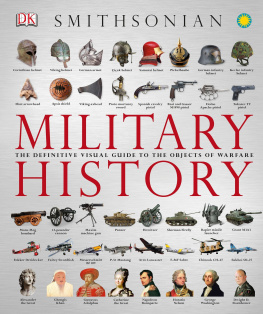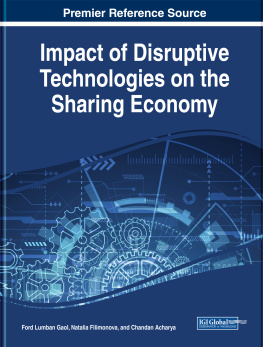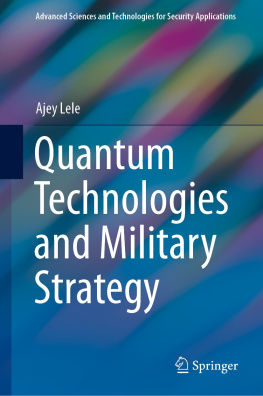YOU TUBE WAR:
FIGHTING IN A WORLD OF CAMERAS IN EVERY CELL PHONE
AND PHOTOSHOP ON EVERY COMPUTER
Cori E. Dauber
October 2009
The views expressed in this report are those of the author and do not necessarily reflect the official policy or position of the Department of the Army, the Department of Defense, or the U.S. Government. Authors of Strategic Studies Institute (SSI) publications enjoy full academic freedom, provided they do not disclose classified information, jeopardize operations security, or misrepresent official U.S. policy. Such academic freedom empowers them to offer new and sometimes controversial perspectives in the interest of furthering debate on key issues. This report is cleared for public release; distribution is unlimited.
*****
This publication is subject to Title 17, United States Code, Sections 101 and 105. It is in the public domain and may not be copyrighted.
*****
Comments pertaining to this report are invited and should be forwarded to: Director, Strategic Studies Institute, U.S. Army War College, 122 Forbes Ave, Carlisle, PA 17013-5244.
*****
All Strategic Studies Institute (SSI) publications are available on the SSI homepage for electronic dissemination. Hard copies of this report also may be ordered from our homepage. SSIs homepage address is: www.StrategicStudiesInstitute.army.mil .
*****
The Strategic Studies Institute publishes a monthly e-mail newsletter to update the national security community on the research of our analysts, recent and forthcoming publications, and upcoming conferences sponsored by the Institute. Each newsletter also provides a strategic commentary by one of our research analysts. If you are interested in receiving this newsletter, please subscribe on our homepage at www.StrategicStudiesInstitute.army.mil / newsletter/.
ISBN 1-58487-
FOREWORD
Insurgents making use of terrorist techniques are fighting to shape the attitudes and perceptions of the public to undermine the public will to fight. In a modern age, this is done by shaping media coverage. It is not going too far to say that terrorist attacks are, in fact, media events, designed to draw the attention of the press since, without a larger audience, a terrorist attack will have accomplished very little.
This monograph, by Dr. Cori E. Dauber, argues that terrorist attacks today are often media events in a second sense: information and communication technologies have developed to such a point that these groups can film, edit, and upload their own attacks within minutes of staging them, whether the Western media are present or not. In this radically new information environment, the enemy is no longer dependent upon the traditional media. This is, she argues, the You Tube War.
The Strategic Studies Institute is pleased to offer this monograph, which methodically lays out the nature of this new environment in terms of its implications for a war against media-savvy insurgents, and then considers possible courses of action for the Army and the U.S. military as they seek to respond to an enemy that has proven enormously adaptive to this new environment and the new type of warfare it enables.
 DOUGLAS C. LOVELACE, JR.
DOUGLAS C. LOVELACE, JR.
Director
Strategic Studies Institute
ABOUT THE AUTHOR
CORI E. DAUBER is an Associate Professor of Communication Studies and of Peace, War, and Defense at the University of North Carolina at Chapel Hill, and is the 2008-09 Visiting Research Professor at the Strategic Studies Institute of the U.S. Army War College. Her current work focuses on terrorist and insurgent efforts to manipulate Western press coverage. Dr. Daubers work has been published in Military Review and briefed to the John F. Kennedy School for Special Warfare, the Canadian Forces College, and to NATO Public Affairs Officers. Her work will appear in a forthcoming collection of essays from the Combating Terrorism Center at West Point ( Influence Warfare: How Terrorists and Governments Fight to Shape Perceptions in a War of Ideas , James Forest, ed.). The larger research project from which this work is drawn will appear in book form as True Lies: Terrorist and Insurgent Efforts to Manipulate the Western Press. She has also published in journals such as Armed Forces and Society , Security Studies , Comparative Security Policy and Rhetoric and Public Affairs . Dr. Dauber holds a B.S. from Northwestern University, an M.A. from the University of North Carolina at Chapel Hill, and a Ph.D. from Northwestern, all in Communication Studies.
SUMMARY
There is a vast literature on the potential for new technologies to create a Revolution in Military Affairs or networked warfare, but that is a discussion of the impact of military technology on the way the force itself can be used. Today there is a question regarding the impact of new communication and information technologies in the hands of civilianssome of whom are combatantson the environment in which the force will be used. This monograph argues that the impact of these technologies has been, and will be, great enough that the way they are shaping the battlefield needs to be understood.
Waging war against terrorists (or insurgents using a terrorist playbook) is a qualitatively different enterprise from earlier wars. By definition, terrorists are too weak to fight successful conventional battles. They fight to shape the perceptions and attitudes of the publica battle over the publics will to continue fighting, whether that is the indigenous public insurgents seek to intimidate or the domestic American public they seek to influence so as to force counterinsurgents to withdraw from the battlefield prematurely. And in the modern world, this will be a battle to shape media coverage.
Terrorist attacks ought to be understood as consciously crafted media events , and while that has always been the case, today it is more true than ever before in two ways. First, the terrorist attack is itself often designed and intended for the cameras. Terrorist attacks are designed for an audience. Their true target is not that which is blown upthat item, or those peoplefor that is merely a stage prop. What is really being targeted are those watching at home. The goal, after all, is to have a psychological effect (to terrorize), and it isnt possible to have such an effect on the dead.
This means that the terrorist attack is a media event in the sense that it is designed to attract the attention of the media, the same way that a political campaign event is a media event designed to attract the medias attention and thus garner coverage. When we discuss media attention, we are really first and foremost talking about television, and we are really then talking about gaining the attention of the camerasand the way to do that is to provide good visuals, however those are defined in a particular context.
Understanding the interaction between media needs and the way terrorist attacks satisfy those needs is essential. This is the case because developing strategies to fight an insurgent enemy has become more challenging as todays wars are taking place in a radically new information and media environment, and todays terrorists and insurgents have been brilliant at capitalizing on this environment in their operational art.
For today, terrorism is a media event in a second sense. Terrorists and insurgents are now no longer dependent upon the professional media to communicate. In fact, to an unprecedented degree, the professional media have become dependent upon them . This is due to technological developments which permit any terrorist to film, edit, and upload their actions virtually in real time whether Western media are there to serve witness or not.







 DOUGLAS C. LOVELACE, JR.
DOUGLAS C. LOVELACE, JR.